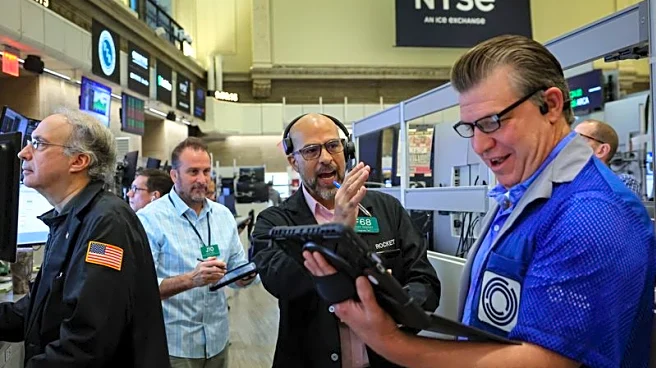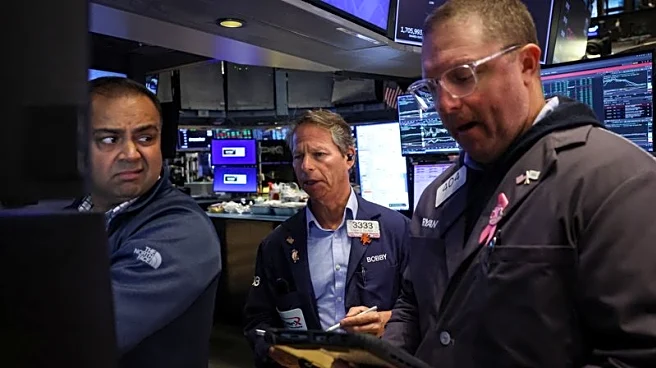What's Happening?
Wall Street is set to open lower as investors await new economic data following the end of the longest government shutdown in U.S. history. President Trump signed a bill to reopen the government, but the absence
of official data during the shutdown has left the Federal Reserve and traders uncertain about the economy's health. Private data indicates a weakening job market, with U.S. employers shedding over 11,000 jobs weekly through late October. Retail job postings also dropped 16% compared to last year. Traders are now pricing in a 54% chance of a 25-basis-point rate cut in December, down from 70% last week. Several Federal Reserve officials have expressed skepticism about another rate cut, influencing investor sentiment.
Why It's Important?
The reopening of the government and the subsequent release of economic data are crucial for assessing the U.S. economy's trajectory. The prolonged absence of official data has created uncertainty, affecting market stability and monetary policy decisions. The potential rate cut in December could impact borrowing costs and economic growth. The skepticism from Federal Reserve officials suggests a cautious approach to monetary policy, which could influence investment strategies and economic forecasts. The job market's weakness and retail sector decline highlight broader economic challenges that could affect consumer spending and business investment.
What's Next?
Investors and policymakers will closely monitor upcoming economic data releases to gauge the economy's health and adjust strategies accordingly. The Federal Reserve's next steps regarding interest rates will be pivotal in shaping economic conditions. Market participants will parse comments from Federal Reserve officials for insights into future policy decisions. The ongoing analysis of private data sources will continue to play a role in economic assessments until official data is fully restored.













